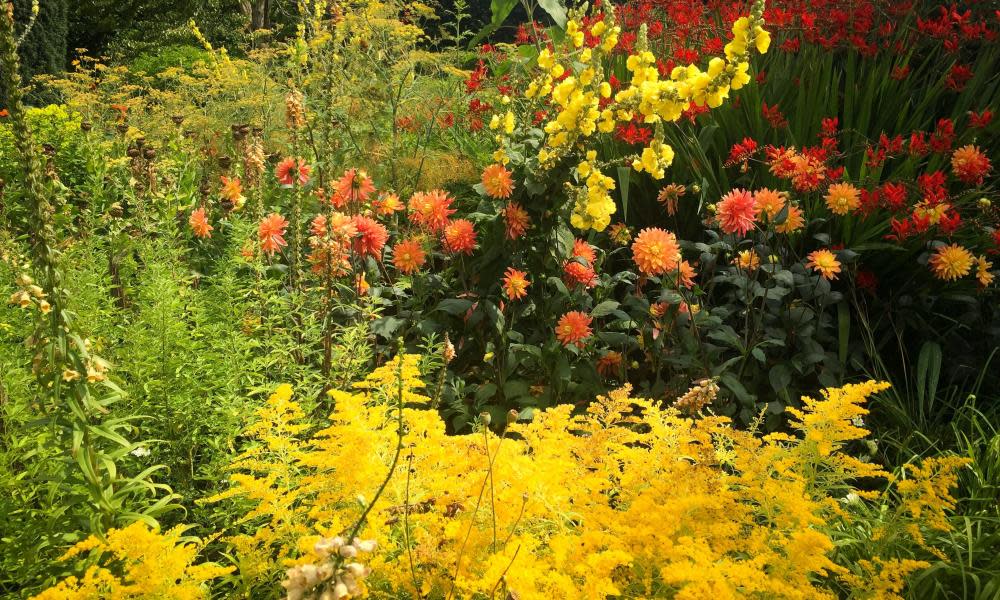The fine art of not doing what you ‘should’ do

I stumbled across a gardening post on Twitter today that really made me think. Forty-five seconds of smartphone video footage took me, and thousands of people across the world, around a quirky, colourful, yet tiny outdoor space. Starting on a shot of a Bagpuss-topped fluorescent-pink wheelie bin, it drifted past dazzling mosaics to a tree so festooned with hanging bird feeders it looked like a conceptual art piece. It’s one of the few everyday, domestic gardens that’s really made a big impression on me. Not just because of the design itself, but also for the story behind it. Posted by the creator’s sister, this garden sprang from the imagination of a person with mental health vulnerabilities. Despite having the dream of sharing the space with a wider audience, the creator’s application to a local garden scheme had been repeatedly rejected.
Now, this design admittedly doesn’t have the hallmark features of your typical open garden. There are no immaculate flower borders that look as if they have been cut and pasted from a CGI model of this year’s Chelsea Flower Show. The lawn lacked the nail-scissor-clipped attention to detail and, of course, the all-important stripes. There isn’t even a vast space to serve tea and cake in the tiny plot. But its unselfconscious sense of fun and frivolity coupled with a total absence of any whiff of keeping up with the Joneses made it, to me, far more brave, original and honest than many of the top show gardens. In fact, its lack of obediently conforming to accepted ideas of what gardens “should” be is what makes it so special.
It’s only people brave enough to step out of the shackles of convention that cause garden design to evolve
More fundamentally, it did something that most gardens don’t do: it made me pause, reflect and reassess some of my assumptions, which I believe is what drives any art form forward. Once upon a time, what are now considered stunning wildlife gardens would have been dismissed as weedy and chaotic. Likewise, the bare patches of earth that today are considered glaring flaws, were in Georgian times painstakingly maintained between plants – like the plain white wall between paintings in an art gallery – to show each one off to maximum effect. It’s only people brave enough to be true to themselves and step outside the shackles of convention that have caused garden design to evolve.
Gertrude Jekyll, whose gardens are today so revered you can virtually see the packets of silica gel hung up to perfectly preserve their aesthetic, was initially thought of as absolutely scandalous for her idea of mixing plants – like impressionist artists use paint – rather than sticking to blocks of single colours.
It’s these sorts of designs that elevate horticulture from mere decoration to proper art form. Maybe if we were shown more of these, we horticulturists would reach far more people who might otherwise never be inspired by gardening. I mean, all you need to do is look at the hundreds of comments from people all over the world who have been as moved as I am by this creation, to know it’s already doing just that.
Follow James on Twitter @Botanygeek

 Yahoo Movies
Yahoo Movies 
